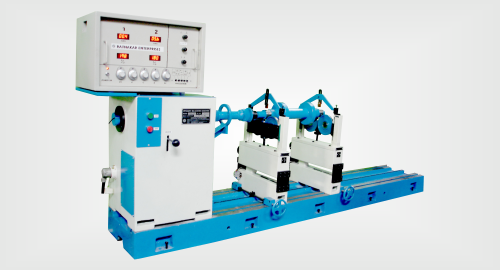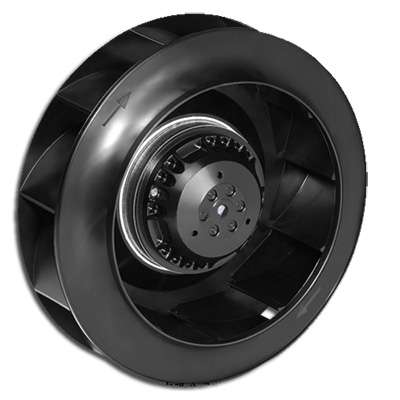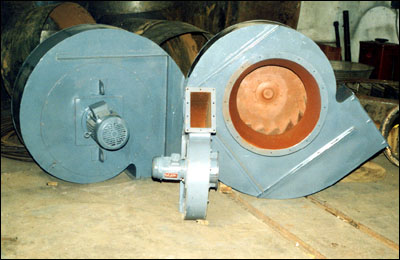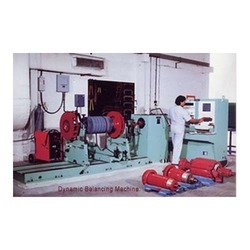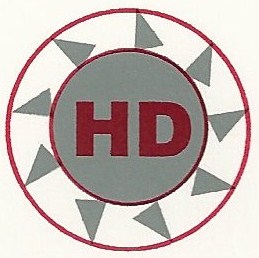HINDUSTAN DYNAMICS
PIONEERS IN THE FIELD OF DYNAMIC BALANCING
Hindustan Dynamics established in 1990 in Coimbatore, believes in quality and long term customer relationship. The company specializes in the field of dynamic balancing with high productivity serving for automobile, textile, chemical and electrical engineering etc.
Services
- 1. Introduction 1.1 Known as International Standard Organization, ISO 1940/1 – Balance quality requirements for rigid rotors. ISO 1940/1 – Balance quality requirements for rigid rotors. ANSI S2.19-1975 BS 6861: Part 1 VDI 2060 1.2 Also adopted by: - ANSI (American National Standards Institute) S2.19-1975. - British Standards, BS 6861: Part 1 - German Standards, VDI 2060. 1.3 Other standard - MIL-STD-167-1 - API 610
- 2. Balance Quality Grade ISO 1940/1
- 2. Balance Quality Grade ISO 1940/1 What is mean by G 0.4, G 1.0, G 2.5, G 6.3 and so on? G is the product of specific unbalance & the angular velocity of the rotor at maximum operating speed. What is specific unbalance? Specific unbalance - center of gravity displacement of rotor. - Symbol = eper - Unit in g.mm/kg or um.
- 2. Balance Quality Grade ISO 1940/1 What is angular velocity? - Measure how fast rotor is turning. -The standard unit for angular velocity is "radians per second“. - One turn or one revolution: - 2∏ radians - 360 degrees - 60 seconds - 1 minute - Unit can be in rpm or Hz -Symbol is ω (omega) - Formula = ω = 2 ∏n/60 ω Back to G 0.1, G 1.0, G 2.5, G 6.3 and so on Is actually = eper x ω Unit in mm/s Meaning G1.0 is the rotor unbalance shall create vibration of 1.0 mm/s at maximum operating speed at certain center of gravity displacement. 3. Maximum Permissible Specific Residual Unbalance, eper Is the method to find center of gravity displacement by referring to: 1. Balance quality grade required 2. Operating or maximum rotor speed Two ways how to find center of gravity displacement 2. Using ISO 1940/1 unbalance nomogram. 1. Calculation by using formula. Calculation by using formula. eper = (10 x G) / (n x 1000) Where G = Balance quality grade n = Rotor operating speed in RPM.
- 7. 3. Maximum Permissible Specific Residual Unbalance, eper Using ISO 1940/1 unbalance nomogram Units in: g.mm/kg or = g.mm/kg = 1/1000 x mm = 10-3 x 10-3 m = 10-6 m = um (microns)
- 8. 4. Maximum Permissible Residual Unbalance, Uper Is a function of: Rotor’s center gravity of displacement (um) Rotor weight (kg), Divided into four rules: 1st - General rules 2nd – Rules for symmetrical rotor 3rd – Rules for outboard rotor 4th – Rules for overhung & narrow rotor Balancing radius (mm). 1st – General rules Uper = (eper x m) / r Where eper = Rotor permissible specific unbalance (g.mm/kg or um) m = Weight of rotor (kg) r = Balancing radius (mm) i.e. balancing wieght location.
- 9. 4. Maximum Permissible Residual Unbalance, Uper 2nd – Rules for symmetrical Rotor Apply to dynamic balancing requirement for two planes. Formula Plane 1 , Uper = [(eper x m) / r] ÷ 2 Plane 2 , Uper = [(eper x m) / r] ÷ 2 If HL = HR Plane 1 , Uper = [(eper x m) / r] (HR ÷ B) Plane 2 , Uper = [(eper x m) / r] (HL ÷ B) If HL ≠HR
- 10. 4. Maximum Permissible Residual Unbalance, Uper 2nd – Rules for symmetrical Rotor (Cardan shaft example) Apply to dynamic balancing requirement for two planes. Calculate: eper eper = (10 x G) / (n x 1000) = (10 x 16) / (1272 x 1000) = 125.7 um Data: Balance quality grade = G 16 Weight = 450 kg Max. speed = 1272 rpm Balancing radius = 190 mm Plane 1 , Uper = [(eper x m) / r] ÷ 2 Plane 2 , Uper = [(eper x m) / r] ÷ 2 If HL = HR Uper = [(125.7 x 450)/190] ÷ 2 = 148.8 grams Calculate: Uper Permissible residual unbalance for each plane = 148.8 grams
- 11. 4. Calculate Center of Gravity L DD d/2 d/2 e CG= e = (1/3) x [(3D + 2d)÷(2D+d)] x L D = 1500 2d + D = 2500 L = 3000 CG= e = 1625 mm Plane 1 , Uper = [(eper x m) / r] (H2 ÷ B) Plane 2 , Uper = [(eper x m) / r] (H1 ÷ B) If H1 ≠H2
- 12. 5. Maximum Permissible Residual Unbalance, Uper 2nd – Rules for symmetrical Rotor (Pulper rotor example) Apply to dynamic balancing requirement for two planes. Calculate: eper eper = (10 x G) / (n x 1000) = (10 x 6.3) / (160 x 1000) = 393.7 um Data: Balance quality grade = G 6.3 Weight = 5700 kg Max. speed = 160 rpm Balancing radius 1 = 725 mm Balancing radius 2 = 1200 mm Calculate: Uper Permissible residual unbalance for Plane 1 = 1416 grams Plane 2 = 1013 grams Plane 1 , Uper = [(eper x m) / r1] (H2 ÷ B) = [(393.7 x 5700)/725] (1375/3000) = 1416 grams Plane 2 , Uper = [(eper x m) / r2] (H1 ÷ B) = [(393.7 x 5700)/1200)] (1625/3000) = 1013 grams If HL ≠HR
- 13. 6. Maximum Permissible Residual Unbalance, Uper Apply to dynamic balancing requirement for one planes. Formula Static , Uper = [(eper x m)/r] x (2D/C) Dynamic, Uper = [(eper x m)/r] x (3D/4C) 4th – Rules for overhung/narrow Rotor
- 14. 7. Maximum Permissible Residual Unbalance, Uper 4th – Rules for overhung/narrow Rotor (Trim pit blower example) Apply to dynamic balancing requirement for one planes. Calculate: eper eper = (10 x G) / (n x 1000) = (10 x 6.3) / (2890 x 1000) = 21.7 um Data: Balance quality grade = G 6.3 Weight, m = 155 kg Max. speed = 2890 rpm Balancing radius, r = 400 mm C = 720 mm D = 490 mm Calculate: Uper Permissible residual unbalance for Dynamic = 4.20 grams Dynamic, Uper = [(eper x m)/r] (3D/4C) = 4.20 gram
